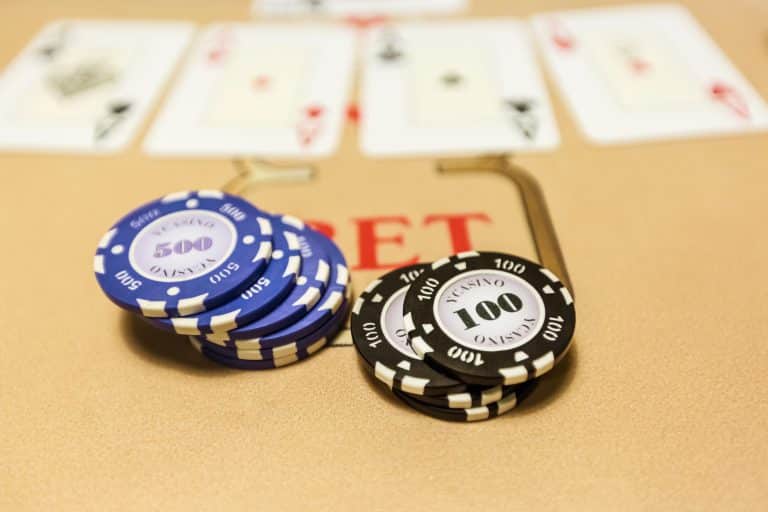Poker is a game of skill, strategy, and luck. While the game may seem simple on the surface, it actually requires a great deal of knowledge and practice to become a successful player. One of the most important things that any poker player can do is develop a winning strategy that they can rely on in any situation. In this blog, we will discuss the essential strategies for winning at poker, including understanding the fundamentals of the game, managing your bankroll, playing with position and aggression, reading your opponents, knowing when to fold, successful bluffing, and studying and improving your game. Whether you are a beginner or an experienced player, these strategies will help you become a better player and increase your chances of winning at the poker table. So, let’s dive in!
Understand the Fundamentals of Poker
The first step to developing a winning strategy in poker is to understand the fundamentals of the game. This includes learning the basic rules and gameplay of poker, the different variations of the game, and hand rankings.
At its core, poker is a card game where players bet on the strength of their hand, with the ultimate goal of winning the pot. In most variations of poker, players are dealt a hand of cards and then have the opportunity to bet or fold based on the strength of their hand and their position in the game.
There are several different variations of poker, including Texas Hold’em, Omaha, Seven-Card Stud, and more. Each variation has its own unique rules and gameplay, so it is important to understand the rules of the specific variation that you are playing.
One of the most important aspects of understanding the fundamentals of poker is knowing hand rankings. In most variations of poker, the highest-ranking hand wins the pot. The ranking of hands typically follows a standard hierarchy, with the royal flush (ace, king, queen, jack, and ten of the same suit) being the highest-ranking hand, and a high card being the lowest-ranking hand.
Understanding the fundamentals of poker is the foundation upon which all successful poker strategies are built. By having a solid grasp of the rules and gameplay of the game, you can make more informed decisions at the table and increase your chances of winning.
Position and Aggression
Two key elements of a winning poker strategy.
Position refers to where you are seated at the table in relation to the dealer. Being in a later position, such as on the button or in the cutoff, gives you an advantage because you get to act after your opponents have made their decisions. This means you have more information to work with when making your own decisions, and can make more informed bets and raises.
Aggression, on the other hand, refers to making bold plays and taking control of the action at the table. This can involve making larger bets, making raises instead of calls, and generally putting pressure on your opponents to make decisions.
By combining position and aggression, you can create a powerful and effective poker strategy. When you are in a later position, you have the advantage of being able to see what your opponents are doing before making your own decisions. This allows you to make more informed bets and raises, and to take control of the action at the table.
By being aggressive, you can put pressure on your opponents to make decisions that may not be in their best interest. This can lead to mistakes and give you an edge in the game. However, it is important to be selective with your aggression, and to only make bold plays when you have a strong hand or a good read on your opponents.
Overall, combining position and aggression is a powerful strategy that can help you win more pots and dominate the table. By practicing and refining your skills in these areas, you can become a formidable opponent and take your poker game to the next level.
Read Your Opponents
One of the most important skills in poker is the ability to read your opponents. This involves observing their behavior, mannerisms, and patterns of play, in order to gain insight into their thought process and the strength of their hand.
There are many different things to look for when trying to read your opponents. Some players may have a tendency to bet aggressively when they have a strong hand, while others may become more reserved when they are holding a weaker hand. Some players may also give away tells through their body language or facial expressions, such as shaking hands, avoiding eye contact, or biting their lip.
In addition to observing your opponents’ behavior, it is also important to pay attention to their betting patterns. Some players may have a tendency to bluff more often than others, or to bet large when they have a strong hand. By observing these patterns, you can gain insight into the strength of their hand and adjust your own strategy accordingly.
It is important to note that reading your opponents is not an exact science. Some players may intentionally give false tells, or may have patterns of play that are difficult to decipher. However, by paying close attention to your opponents and continually refining your observation skills, you can gain a significant edge in the game.
Overall, reading your opponents is a critical skill in poker that can help you make more informed decisions and increase your chances of winning. By combining this skill with other essential strategies, such as position and aggression, you can create a winning formula that will give you a significant edge at the poker table.

Know When to Fold
Knowing when to fold is an essential strategy for winning at poker. Folding can be a difficult decision, especially when you have already invested money in the pot or have a good hand. However, sometimes folding is the best decision you can make.
There are several key factors to consider when deciding whether to fold. These include the strength of your hand, the size of the pot, and the actions of your opponents. If you have a weak hand and your opponents are betting aggressively, it may be best to fold and avoid losing more money. On the other hand, if you have a strong hand and your opponents are playing cautiously, you may want to stay in the game and try to win a larger pot.
It is also important to consider your position at the table when deciding whether to fold. If you are in a later position and have more information about your opponents’ actions, you may be able to make a more informed decision about whether to stay in the game or fold.
Another important factor to consider is your overall bankroll and the stakes you are playing for. If you are playing at a level that is too high for your bankroll, it may be best to fold and come back to play another day when you have more funds available.
Ultimately, the decision to fold comes down to making the best possible decision with the information you have available. By practicing good decision-making skills and constantly refining your poker strategy, you can become a better player and increase your chances of winning at the table.
Conclusion
In conclusion, winning at poker requires a combination of skill, strategy, and practice. Understanding the fundamentals of the game, managing your bankroll, and paying attention to position and aggression are all important strategies for success. Reading your opponents, knowing when to fold, and mastering the art of bluffing can also help you dominate the table and win more pots.
Perhaps most importantly, studying and improving your game is an essential part of long-term success in poker. By continuously learning and developing your skills, you can stay ahead of the competition and become a more confident and effective player.
While success in poker is never guaranteed, by implementing these essential strategies and dedicating yourself to continuous learning and improvement, you can increase your chances of winning at the table and achieve your goals as a poker player.






